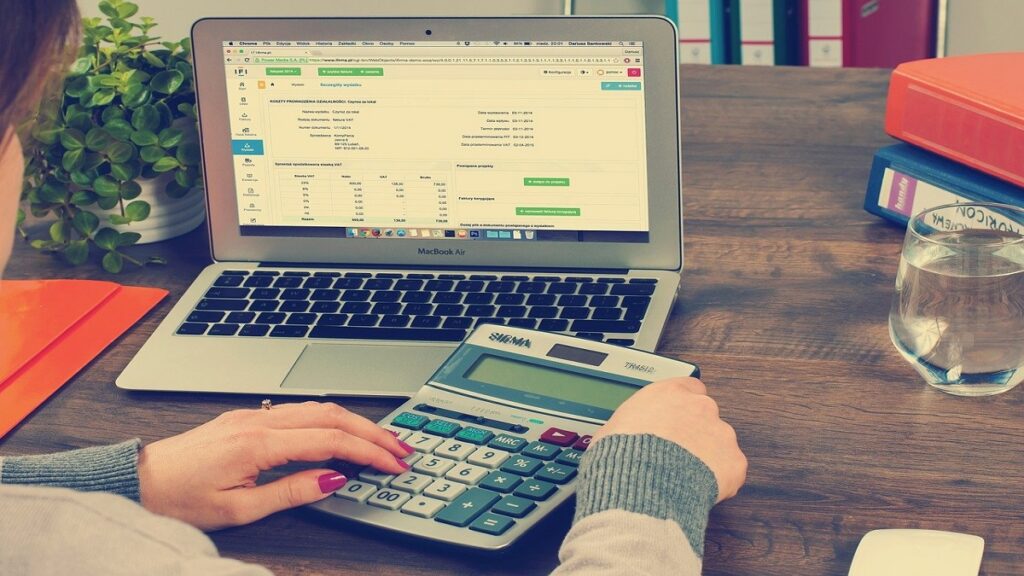Regardless of the size of your business, the use of an accounting equation is necessary. It lets you formulate financial statements effectively. This equation has unique format and standard that is accepted worldwide, and anyone from any country can use it. Knowing about its wider scope, now you must be curious to know more about accounting equation and how can you use this equation to make financial statements? What are some of the components of this equation? This article will serve as a comprehensive guide about this equation. Therefore, before moving further, let’s define it first.
An accounting equation tells about a company’s financial conditions. This equation states that a company’s total assets equal its liabilities and shareholder’s equity. It ensures that the company’s balance sheet remains balanced. Each entry on the debit side must have a corresponding entry on the credit side of the financial statement. An accounting equation looks like this.
Total Assets = Liabilities + Shareholder’s equity
Components of Accounting Equation
Having a good understanding of all the parts of the equation is necessary. It helps accountants prepare the financial statement as well as accounting dissertation writing tasks effectively. Thus, a brief description of all the elements is as follows:
Total Assets
The asset is anything that has value and is currently in the company’s ownership. These can be objects and different entities. All the assets must have an economic value. The assets of a company are further subdivided into two categories. You can find the explanation of these two types below;
Tangible Assets
The first type of assets that a company owns are tangible assets. Tangible means things that you can touch with your hand or see physically. The typical examples of tangible assets are equipment, land and buildings. The company’s number of transport vehicles and products come under these assets.
Intangible Assets
The next type of assets in the accounting equation are intangible ones. These are the assets that you cannot touch. You can feel them and see them and have a documented existence. Such assets include cash, account receivables and patents. The record of contracts and certificates of deposits (CDs) also comes under this asset category. Besides, assets are also categorised based on life span and liquidity. The liquidity means how fast the assets can be converted into cash. Based on life span, the two types of assets are as follows;
Current Assets
The life span of current assets is less than 12 months. It means that all the items and assets are converted into cash within a year. The current assets include account receivables and prepaid. The inventory also comes under this category.
Fixed Assets
Fixed assets in an accounting equation are the assets that have a longer life span. At least, the life span of these assets is more than one year. Fixed assets include machinery, buildings and vehicles. Fixed assets are not easy to liquidate and take time to convert to cash.
Liabilities are basically an indication of how a company’s assets are being financed. These are the debts and financial obligations of an organisation. In simple words, it is the amount of money that a business owes to others. The company has to return it to their owners, e.g., vendors and other raw material suppliers. Based on the return schedule, there are two types of liabilities, i.e., current and long-term liabilities. Below is a short description of these two types:
Current Liabilities
These are short term debts or financial obligations. The companies pay this debt within 12 months, or mainly, we can say these are monthly operating debts. The current liabilities may include accounts payable and customer deposits. One important thing to remember is that current liabilities are usually paid with current assets. For example, a company takes the raw material from a vendor. Upon selling the product, the company returns the liability to the vendor. Thus, current liabilities hold an important place in an accounting equation.
Long-Term Liabilities
As the name suggests, the life span of these liabilities is in years. Companies do not pay this in months, but it takes years and years to pay this debt off. These liabilities are typically mortgages or loan that a company take to finance its assets. For instance, the company takes a loan from the bank to buy a new piece of land for its new production unit. Now the loan money is too high that the company can not pay it at once. Therefore, they will pay it over an extended period, which becomes a long-term liability in an accounting equation.
Equity
Equity is the most crucial element of an accounting equation. It is the owner’s financial share of the company. In simple words, it is that portion of the total assets that the company owner owns. Equity can be in the form of assets or cash. It is also sometimes referred to as the Net Worth of a company.
For instance, the company owner purchases a vehicle for $30,000. Now, he takes a $25,000 loan from the bank and contributes $5000 from his pocket. It means that the owner now owns an asset of $30,000, but the equity is only $5000. The accounting equation will look something like this;
Total Assets = Liabilities + Owner’s Equity
$30,000 = $25000 + $5000
Revenue and Expenses
Revenue is the money that a business earns from selling its products or services. The revenue and income are the same things in a financial statement. Also, income and expenses have a close relationship between themselves. Expenses are the expenditures of a company necessary for its working. Net income is a term that you must have heard a lot. It is the revenue that a company earns after subtracting all the expenses.
Conclusion
Financial statements are the backbone of a company. They tell the shareholders about the financial position of a company. The accounting equation plays an essential role in their making by telling the exact assets, liabilities and equity.

